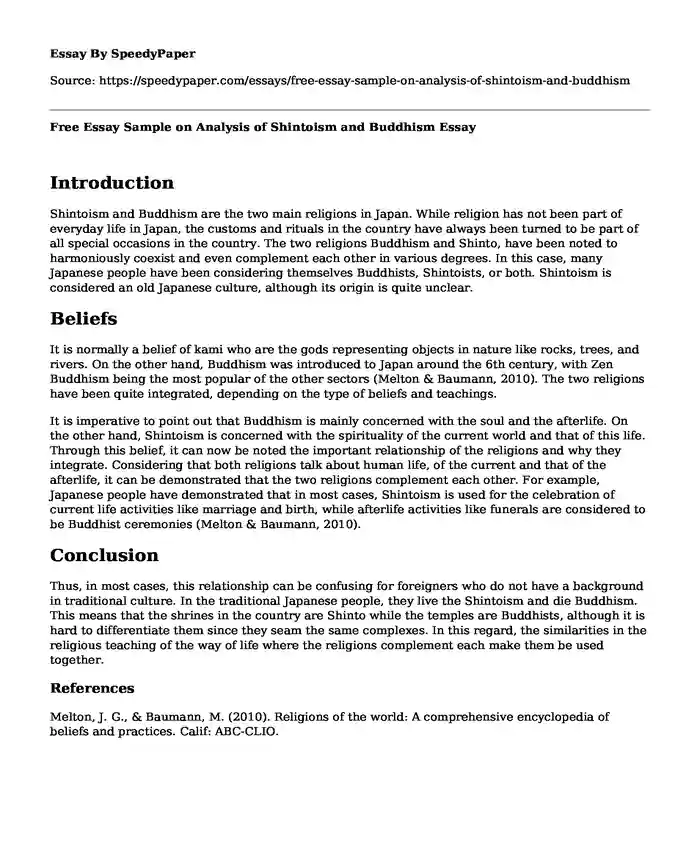Introduction
Shintoism and Buddhism are the two main religions in Japan. While religion has not been part of everyday life in Japan, the customs and rituals in the country have always been turned to be part of all special occasions in the country. The two religions Buddhism and Shinto, have been noted to harmoniously coexist and even complement each other in various degrees. In this case, many Japanese people have been considering themselves Buddhists, Shintoists, or both. Shintoism is considered an old Japanese culture, although its origin is quite unclear.
Beliefs
It is normally a belief of kami who are the gods representing objects in nature like rocks, trees, and rivers. On the other hand, Buddhism was introduced to Japan around the 6th century, with Zen Buddhism being the most popular of the other sectors (Melton & Baumann, 2010). The two religions have been quite integrated, depending on the type of beliefs and teachings.
It is imperative to point out that Buddhism is mainly concerned with the soul and the afterlife. On the other hand, Shintoism is concerned with the spirituality of the current world and that of this life. Through this belief, it can now be noted the important relationship of the religions and why they integrate. Considering that both religions talk about human life, of the current and that of the afterlife, it can be demonstrated that the two religions complement each other. For example, Japanese people have demonstrated that in most cases, Shintoism is used for the celebration of current life activities like marriage and birth, while afterlife activities like funerals are considered to be Buddhist ceremonies (Melton & Baumann, 2010).
Conclusion
Thus, in most cases, this relationship can be confusing for foreigners who do not have a background in traditional culture. In the traditional Japanese people, they live the Shintoism and die Buddhism. This means that the shrines in the country are Shinto while the temples are Buddhists, although it is hard to differentiate them since they seam the same complexes. In this regard, the similarities in the religious teaching of the way of life where the religions complement each make them be used together.
References
Melton, J. G., & Baumann, M. (2010). Religions of the world: A comprehensive encyclopedia of beliefs and practices. Calif: ABC-CLIO.
Cite this page
Free Essay Sample on Analysis of Shintoism and Buddhism. (2023, Nov 08). Retrieved from https://speedypaper.com/essays/free-essay-sample-on-analysis-of-shintoism-and-buddhism
Request Removal
If you are the original author of this essay and no longer wish to have it published on the SpeedyPaper website, please click below to request its removal:
- Awarded Carrier Essay Sample
- Free Essay Sample on Christian Ethics
- Essay Example: Retail Food Group
- Free Essay: Listing Prada on Hong Kong
- Consumers' Purchase Behavior in Germany and Turkey. Essay Example
- Essay Example: How My View of Theology Has Changed
- Free Essay Example on Google on the Chinese Market
Popular categories





